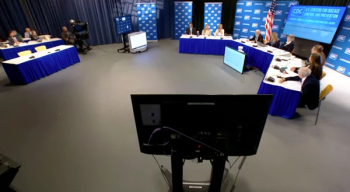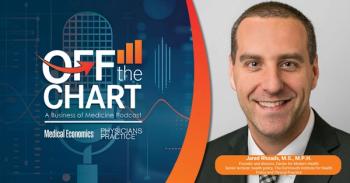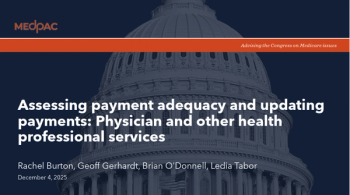
Medicare hospital insurance trust fund projected to be depleted in 2033
Key Takeaways
- Medicare faces a financial shortfall, with funds projected to run out by 2033, necessitating legislative intervention.
- Physician reimbursement under current law does not keep pace with economic conditions, impacting healthcare quality for Medicare beneficiaries.
Annual report puts depletion three years ahead of projected schedule in 2024 report.
As more Americans get older and rely on Medicare for health insurance, the program is projected to run out of money in 2033 — or three years earlier than analysts thought in their 2024 review.
The
“Current-law projections indicate that Medicare still faces a substantial financial shortfall that needs to be addressed with further legislation,” the summary of projections said. “Such legislation should be enacted sooner rather than later to minimize the impact on beneficiaries, providers, and taxpayers.”
Physician pay
The trustees noted some provisions of current law can be challenges for the program.
“For example, physician payment update amounts are specified for all future years,” the report said. “These amounts do not vary based on underlying economic conditions, and they are not expected to keep pace with the average rate of physician cost increases. These rate updates could be an issue in years when levels of inflation are high and would be problematic when the cumulative gap between the price updates and physician costs becomes large.”
The end result: Availability and quality of health care will get worse over time for Medicare beneficiaries, compared with people who have private insurance.
Highlights
This year’s report had highlights from 2024:
- Medicare covered 67.6 million people, or 60.3 million people aged 65 years and older, and 7.3 million disabled.
- About 50% of beneficiaries enrolled in a Medicare Advantage private health plan contracting with Medicare to provide health services.
- Total expenditures in 2024 were $1,122.1 billion. Total income was $1.133.3 billion.
‘A significant issue in the long term’
The report includes an illustrative example that shows Medicare expenditures as a percentage of the U.S. gross domestic product under current law and with an alternative projection. The illustrative alternative projections are explained in an appendix that touches on payments to physicians and hospitals, improvements or deterioration in productivity, and comparison with private insurance rates of reimbursement.
For physicians, the payment approach of the Medicare Access and CHIP Reauthorization Act of 2015 avoids some of the problems currently in the payment approach for hospitals. But the report acknowledged the physician pay does not vary based on the economy, and does not keep up with physician cost increases.
“Absent a change in the delivery system or level of update by subsequent legislation, the trustees expect access to Medicare-participating physicians to become a significant issue in the long term,” the report said.
For 2024, Medicare spending was 3.8% of the nation’s GDP, and by 2099 that is projected to grow to 6.7%. The illustrative alternative projection, with physician pay tied to the Medicare Economic Index, shows Medicare spending would represent an estimated 8.8% of U.S. gross domestic product by 2099.
“Growth under either of these scenarios would substantially increase the strain on the nation’s workers, the economy, Medicare beneficiaries, and the Federal budget,” the report said.
Health care vs. the economy
Physician pay is a factor, but not the only one. Writ large, another uncertainty is the difference between health care costs and the rate of growth of the overall economy. Since 1960, U.S. national health care growth rates typically have outpaced economics growth rates, the report said. That difference has declined in the last 15 years, but it’s debatable if that is due do cyclical or more permanent factors, such as structural changes to the health sector.
Advances in medicine
There is at least one bright spot in the report: Over time, treatments are getting better for patient health, if not cheaper for their wallets.
“Projections of Medicare costs are highly uncertain, especially when looking out more than several decades, partially because scientific advances will make new interventions, procedures, and therapies possible,” the report said. “Some conditions that are untreatable today may be handled routinely in the future. Spurred by economic incentives, the institutions through which care is delivered will evolve, possibly becoming more efficient. While most health care technological advances to date have increased expenditures, the health care landscape is shifting. No one knows whether future developments will increase or decrease costs.”
Productivity gains
Health care workers could be part of the solution, but cutting their expenses and boosting productivity won’t be the sole factor, the report said.
“It is conceivable that health care providers could improve their productivity, reduce wasteful expenditures, and take other steps to keep their cost growth within the bounds imposed by the Medicare price limitations,” the report said. “For such efforts to be successful in the long range, however, providers would have to generate and sustain unprecedented levels of productivity gains — a very challenging and uncertain prospect.”
Healthier Americans
The Medicare trustees issued a
Health and Human Services Secretary Robert F. Kennedy Jr., a trustee, credited the leadership of President Donald J. Trump for the campaign to Make America Healthy Again. That effort will “tackle the root causes of chronic disease, bend the cost curve, and protect Medicare for seniors for generations to come,” he said.
“Our country’s focus on sick care instead of health care is driving the rapid rise in projected spending,” Kennedy said.
Cutting waste, fraud and abuse
Centers for Medicare & Medicaid Services Administrator Mehmet Oz, MD, MBA, also a trustee, said Medicare needs serious, sustained reform for to protect the future of the program.
“This administration remains fully committed to protecting and strengthening Medicare through responsible policies that preserve access to high-quality, affordable, patient-centered care while restoring long-term fiscal stability for taxpayers and future generations,” Oz said. “That’s also why we’ve made crushing fraud, waste, and abuse in Medicare a top priority, which has led CMS to stopping more than $100 million in suspected fraudulent Medicare payments from going out the door to potentially bad actors over the last few months.”
The other board members are Treasury Secretary Scott Bessent, managing trustee; Labor Secretary Lori Chavez-DeRemer; and Social Security Commissioner Frank J. Bisignano.
Newsletter
Stay informed and empowered with Medical Economics enewsletter, delivering expert insights, financial strategies, practice management tips and technology trends — tailored for today’s physicians.















